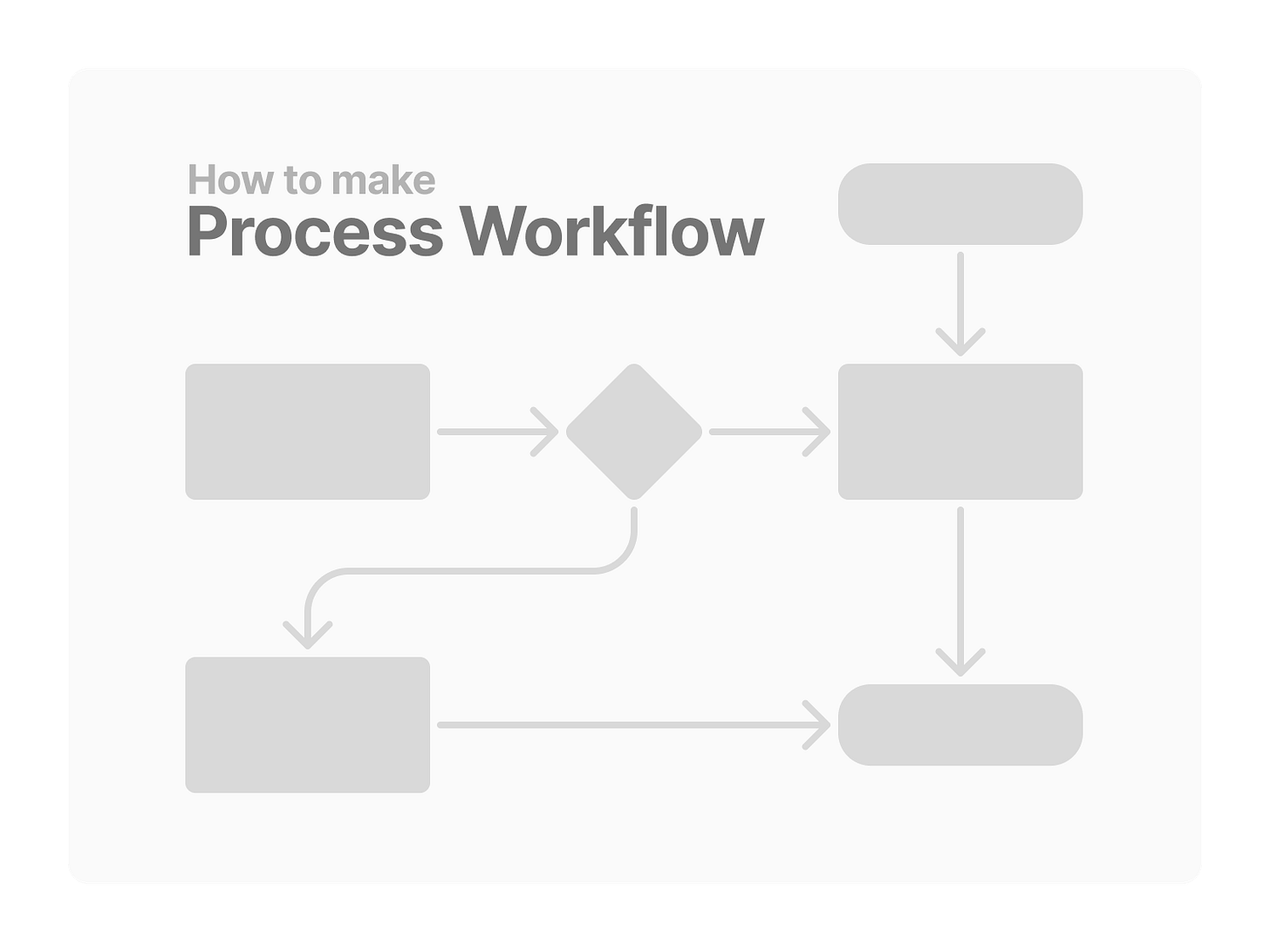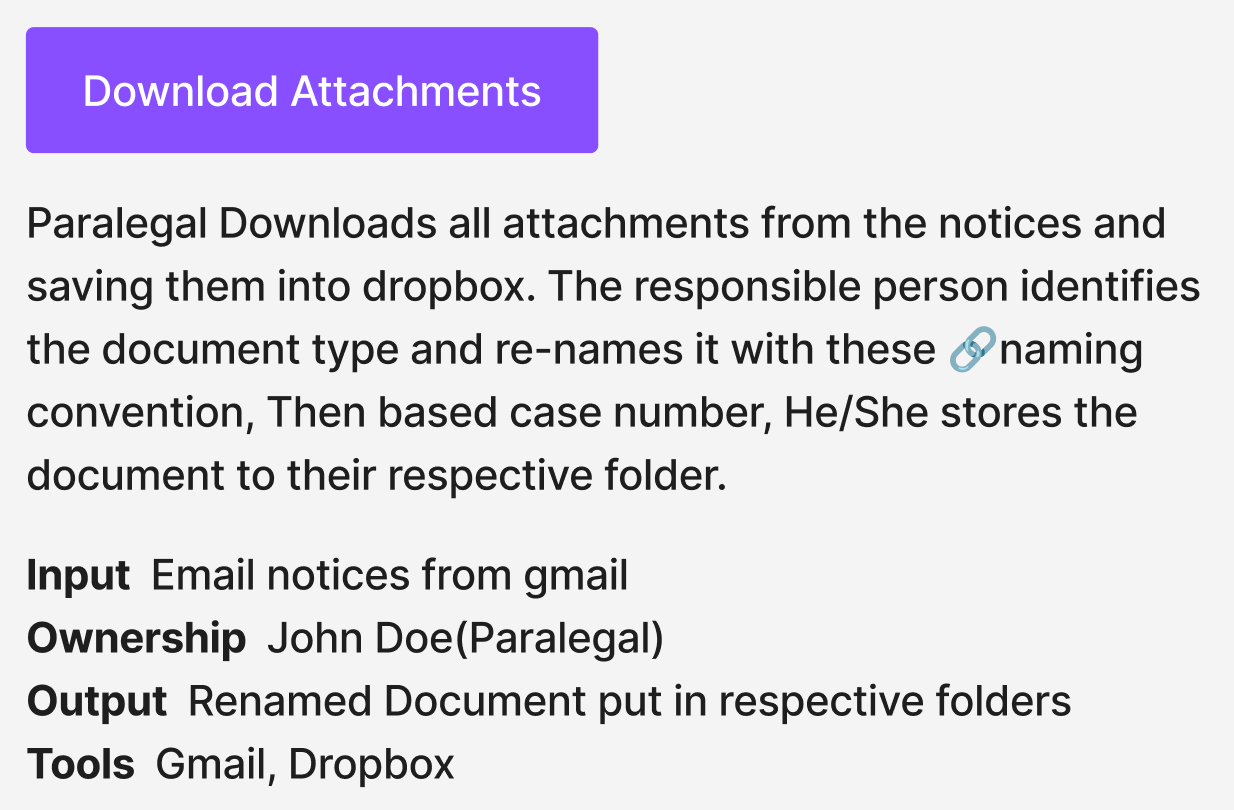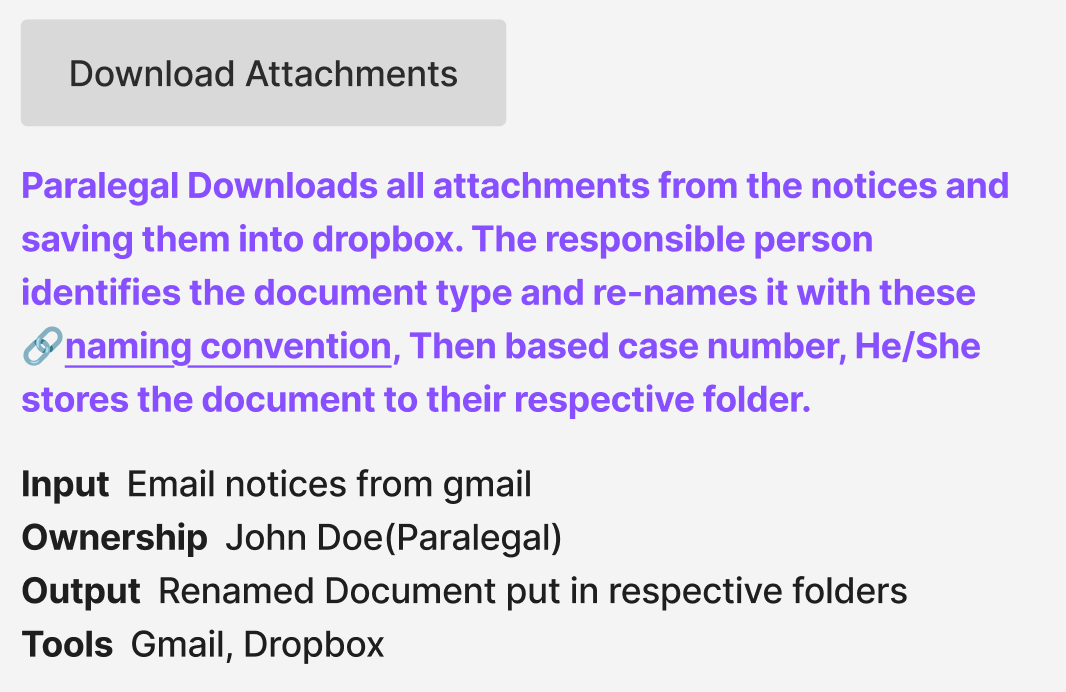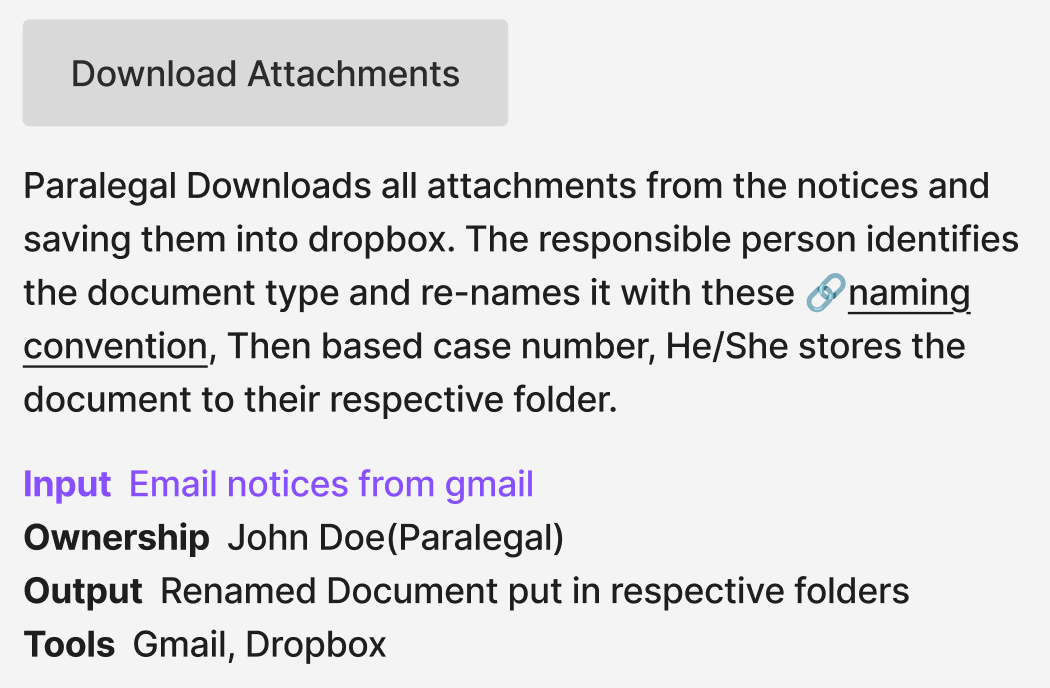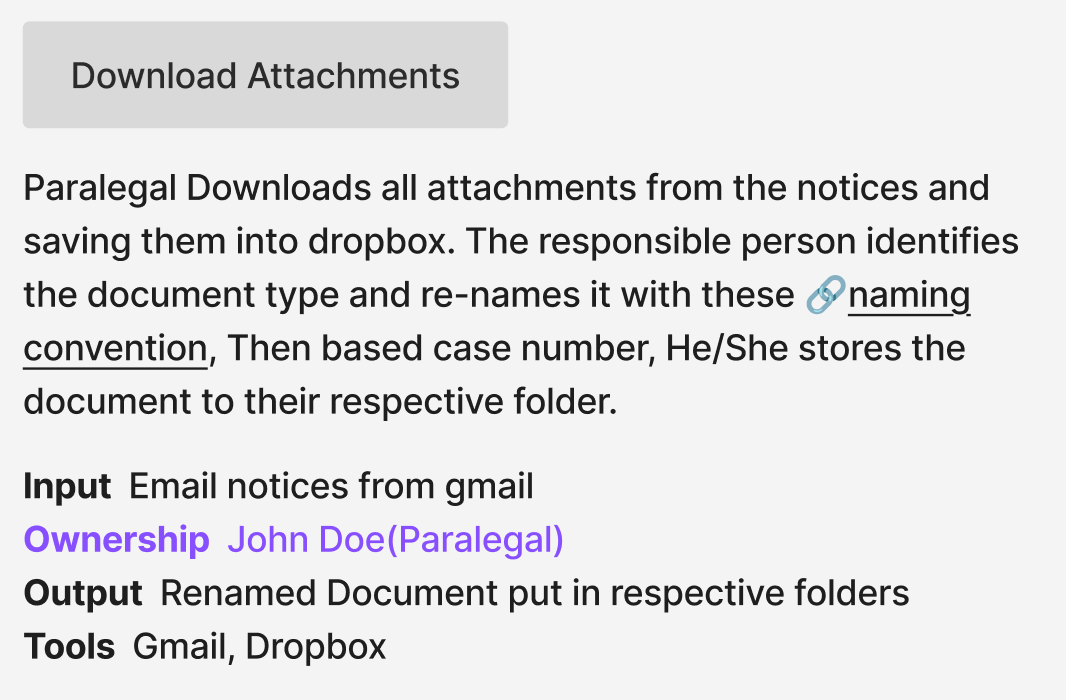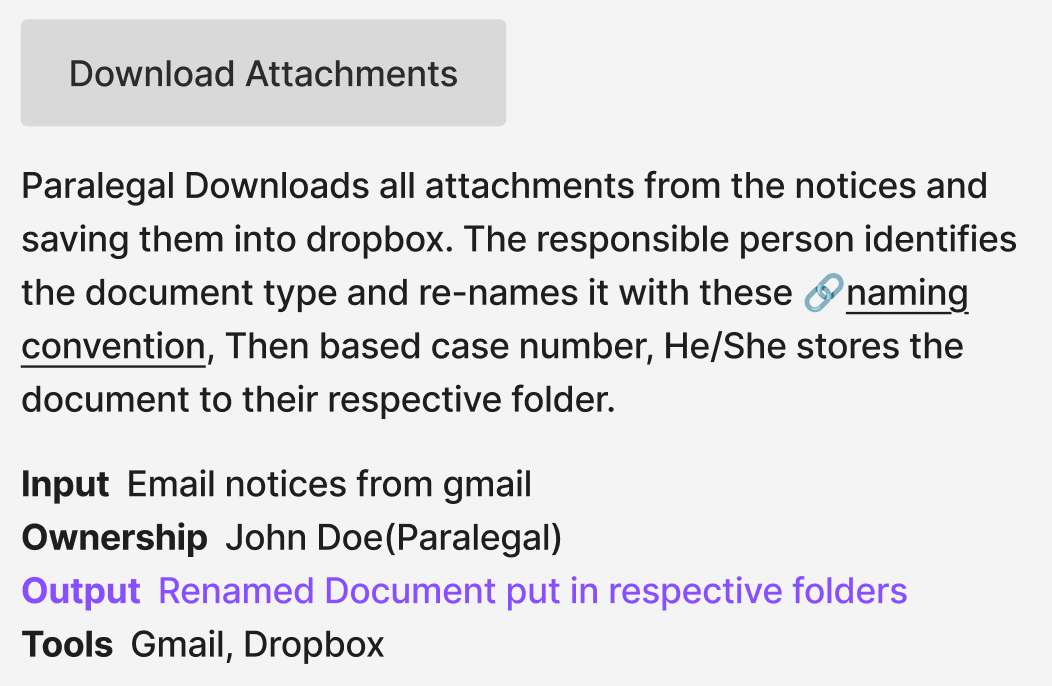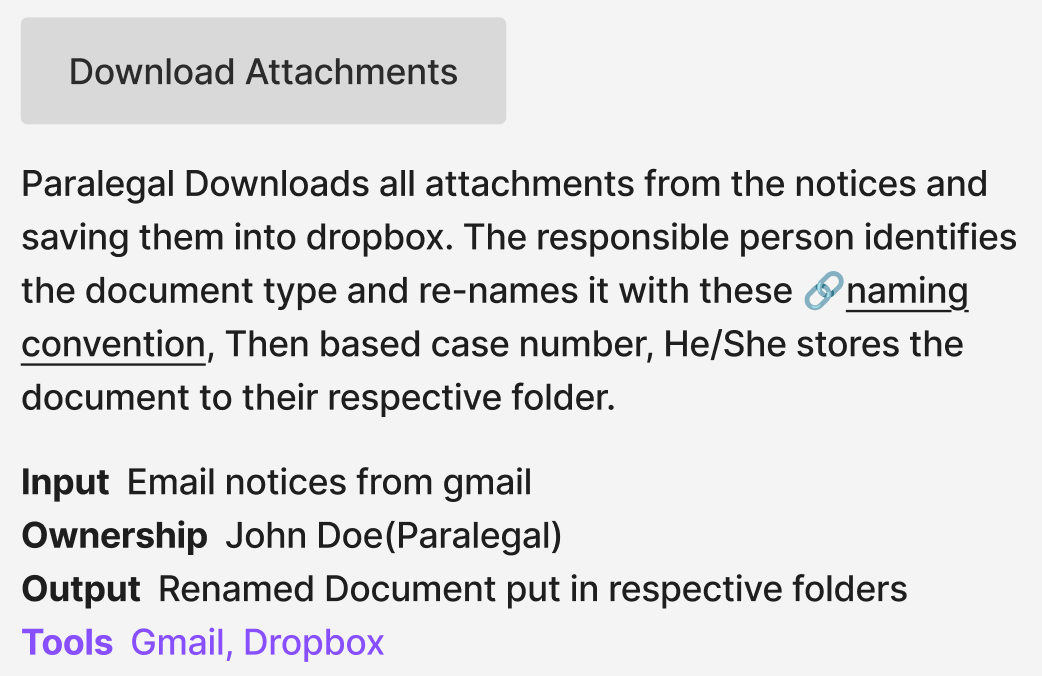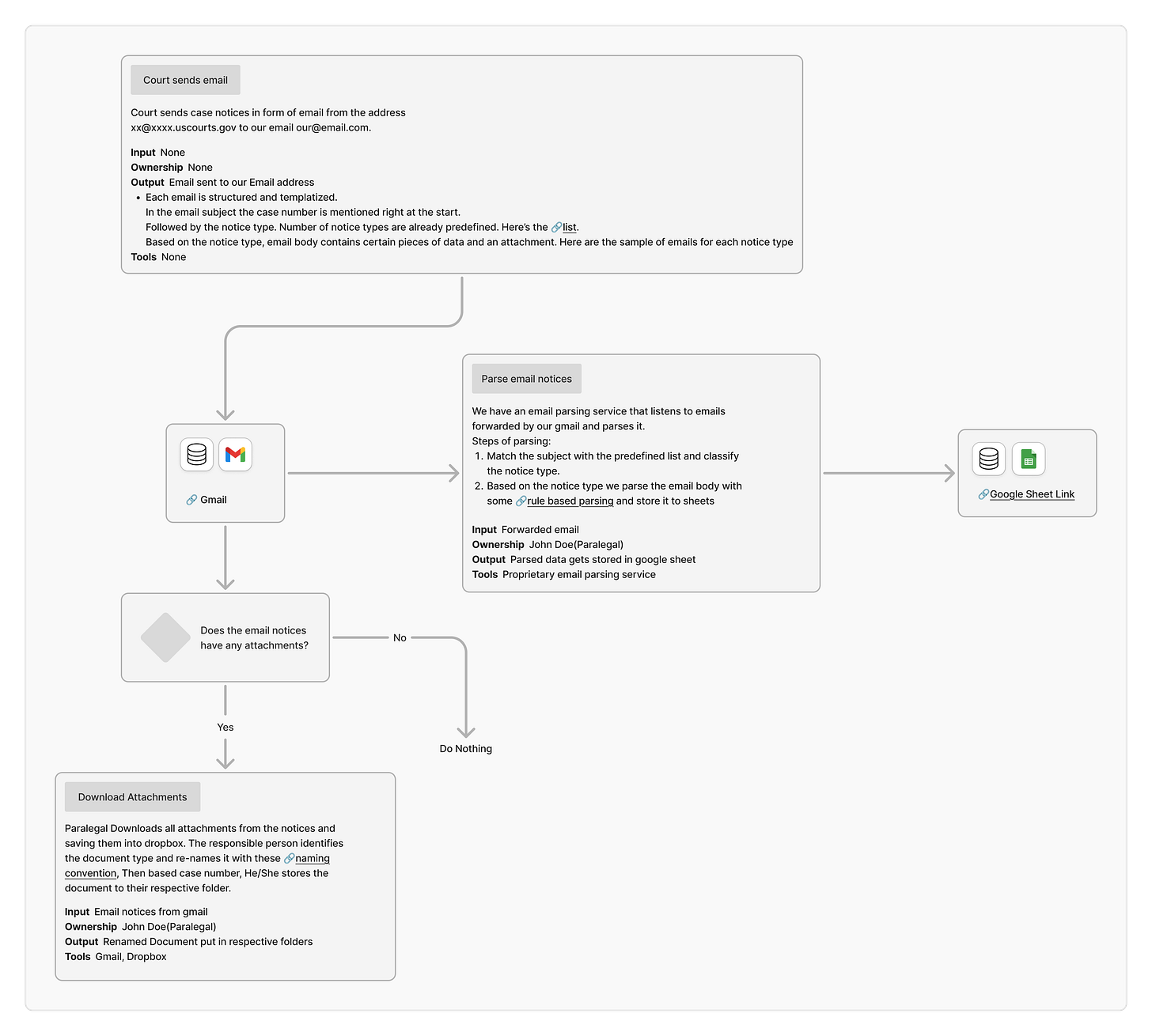How to Document Your Business Processes So AI Teams Can Suggest Improvements.
A Process Workflow Building Guide
This article will guide you to Build Visual Process Workflows so clear that AI Developers, AI consultanies or even ChatGPT can audit your current processes, identify gaps, and suggest automations and AI integration plans without needing deep domain expertise.
Why Do You Need a Process Workflow?
TL;DR → To identify inefficiencies, develop AI Automations, and scale with confidence.
Every business wants AI-driven efficiency. But hiring an AI developer isn’t enough. Without a clear picture of how your processes actually work, there’s always a gap between domain knowledge and implementation.
I’ve personally worked with law firms handling bankruptcy cases, and I can tell you, many of their processes were so complex that it took a significant amount of effort just to understand how all the dots connected. That experience made it clear: unless processes are mapped in a structured, visual way, even skilled professionals spend too much time figuring out the basics before they can suggest improvements.
A well-designed workflow bridges that gap. It documents each step so anyone, whether a lawyer, an AI developer, or a consultant, can quickly understand your operations and propose meaningful improvements.
How to build it?
The core principle: Break the process into steps. Each step falls into one of two categories:
Actions Steps someone (or the system) takes.
e.g., Filing a form or sending a notice.
Decision points Yes/no or multi-option choices driven by rules.
e.g., Is the debtor eligible under Chapter 7?.
The Six Questions to Ask for Every Step
For each step in your workflow, answer the following:
What should be the name of the step?
Step description
What data goes in?
Who processes it?
What comes out of it?
Which tools are used?
Let’s go over these questions one-by-one:
1. What should be the name of the step?
If the step is a decision point, then the question itself that drives the answer should be enough.
And for an action, use the sentence that starts with an action verb, and use present tense & active voice.
For Example: “Download Attachments”, “Validate data”, “Assign task“, “Generate report“
2. Step description
Briefly explain how the input is processed.
3. What data goes in? (i.e, Input)
Identify the required input:
Uploaded documents
API data
Completed forms
Automated emails.
…etc
4. Who processes it? (i.e, Ownership)
The responsible person/s for a specific task.
5. What comes out of it? (i.e, Output)
Define the Output. It can be a document, a calculated number, data saving to storage system(Google Drive, Database) etc.
6. Which tools are used?
List the systems, platforms, or software required.
Putting It All Together
You’ve seen the individual building blocks, step names, inputs, outputs, ownership, and tools. But what does a complete workflow look like once everything is mapped visually?
Here’s a small real life example of a bankruptcy firm’s noticing system built in FigJam:
This workflow illustrates how a bankruptcy firm’s noticing system operates from start to finish:
Court notices arrive via structured email.
An email parsing service classifies and extracts case details.
A decision point checks for attachments.
Paralegals process attachments, rename documents, and store them in the correct client or case folders.
Parsed case data is stored in Google Sheets for easy tracking and auditing.
With a workflow like this, anyone, whether an AI developer, consultant, or even ChatGPT, can follow the bankruptcy noticing process step by step, identify bottlenecks, and propose AI automation opportunities fueling efficiency, growth & scale.
That’s the power of turning complex legal operations into clear, visual workflows.
Hope you enjoyed this guide and found it helpful in thinking about how to map your own processes into clear, visual workflows.


